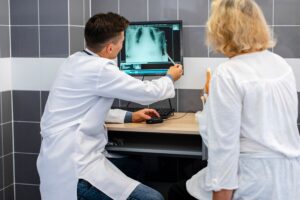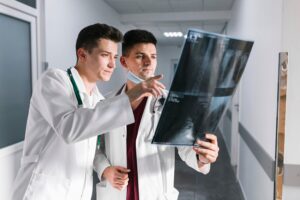X-ray technology utilizes electromagnetic radiation to produce images of the internal structures of the body, such as bones, organs, and tissues. X-ray laboratory services provide access to a range of x-ray imaging techniques, including conventional radiography, fluoroscopy, and computed tomography (CT) scans, which are essential tools for medical diagnosis and treatment.
Importance of X-Ray Imaging in Modern Healthcare

Early Diagnosis and Treatment
X-rays are essential in detecting various health issues at an early stage. From identifying broken bones to diagnosing lung infections, early detection through X-rays allows for timely treatment, improving patient outcomes.
Monitoring Chronic Conditions
Patients with chronic conditions like arthritis or osteoporosis require regular monitoring to track disease progression. X-ray imaging helps healthcare providers evaluate the effectiveness of treatments and make necessary adjustments.
Technological Advancements in X-Ray Imaging
Modern laboratories leverage advanced X-ray technologies for improved diagnostic accuracy and patient comfort:
- Digital X-Rays: These offer higher resolution images with lower radiation exposure compared to traditional film-based methods.
- 3D Imaging: Techniques like computed tomography (CT) provide detailed three-dimensional views of internal structures.
- Portable X-Ray Machines: Allow imaging in remote or emergency settings, enhancing accessibility.
Benefits of Laboratory-Based X-Ray Services

- Expertise: Skilled radiologists and technicians ensure accurate imaging and interpretation.
- Accessibility: Laboratories are often conveniently located and equipped to handle walk-ins or urgent cases.
- Quick Turnaround: Advanced technology enables faster image processing and reporting.
- Safety Measures: Adherence to radiation safety protocols minimizes patient risks.
Common Applications of X-Rays in Diagnostics
-
Bone Fractures and Injuries
X-rays are crucial for detecting fractures, dislocations, and other skeletal injuries, aiding in prompt treatment.
-
Chest Imaging
Chest X-rays help diagnose pneumonia, lung infections, heart enlargement, and other thoracic conditions.
-
Dental X-Rays
Dentists rely on X-rays to identify cavities, root infections, and jawbone abnormalities.
-
Abdominal Imaging
Abdominal X-rays can reveal blockages, stones, or abnormalities in the digestive tract.
-
Cancer Detection
X-rays, particularly mammograms, play a significant role in detecting breast cancer and other tumors.
FAQs
1. What are the risks associated with x-ray examinations?
X-ray examinations involve exposure to low levels of radiation. While the risk of harm from diagnostic x-rays is generally low, it is important to minimize unnecessary radiation exposure.
2. How can I prepare for an x-ray examination?
You may be asked to remove any jewelry or metal objects before the examination. You may also be asked to wear a gown during the procedure. Follow any specific instructions provided by your healthcare provider.
3. What should I expect during an x-ray examination?
The x-ray procedure is usually quick and painless. You may be asked to hold your breath or remain still for a short period during the examination.
Conclusion
X-ray laboratory services play a vital role in modern healthcare, providing essential diagnostic information that guides treatment decisions and improves patient outcomes. By ensuring the quality and safety of x-ray procedures, healthcare providers can leverage the power of this technology to diagnose and treat a wide range of medical conditions effectively.
Schedule an appointment with our Laboratory services for fast and accurate x-ray (972) 633-8747 or (972) 848-0873 or visit us https://www.sccplano.com/
